Community
The meaning of Tết: a sacred transfer from old to new
Chào asks a few different people what Tet means to them
Published
5 years agoon
There is an old Vietnamese saying that goes: “One does not truly understand Tet until one has seen someone carrying six 20-foot kumquat trees on the back of a Honda Win.” Now while this is patently untrue, it does perhaps ask the question what does Tet really mean. Well, it is short for Tet Nguyen Dan, which translates as “Feast of the First Morning of the First Day.” So, yes, feasting. And what a feast. The Vietnamese do not muck about when it comes to food. To “celebrate Tet” in Vietnamese is “an Tet” or “eat Tet,” which illustrates the significance of food during the holiday.

Thuy Nga Vu, a 27-year-old from Hai Phuong, says that Tet is about “cooking and having big meals,” and who could argue with that. There is a long list of traditional Tet foods, but the most famous is banh chung, tightly wrapped sticky rice with meat (usually pork) or bean fillings wrapped in leaves. It is made in the shape of a square using a wooden frame and represents earth.
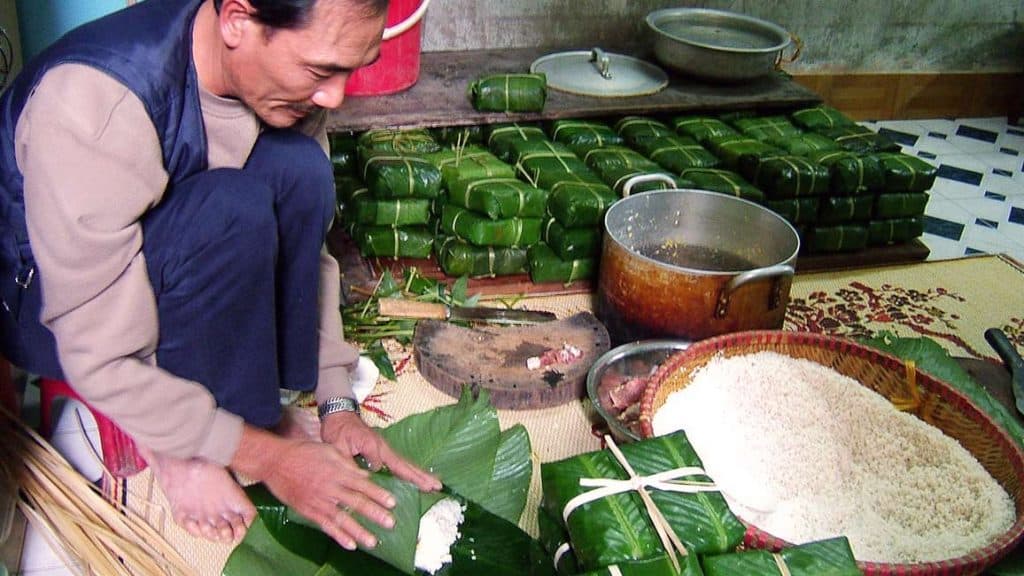
“Banh chung is an indispensable culinary beauty of Tet,” says Nguyen Thị Van,” a 25-year-old originally from Vinh Phuc. “To me, it is not only a typical dish of Tet, but it is also the feeling that banh chung brings – a taste of the homeland, the family.”

Banh Tet is a similar dish, but is made in a cylinder shape representing the moon and is more popular in the South. The two cakes, earth and moon, are reflective of the meaning of Tet, which Van says is “an important time when heaven and earth meet.” After being shaped the dishes are boiled for several hours and the story of the food’s connection to Tet is told to children during the long cooking process.
“I hope to have more compassion, show tolerance for all living beings, be less selfish, more determined, braver, listen to others better, do more meaningful stuff and think about sex less,” a 25-year-old waitress in Hanoi told Chào.
Other Tet foods include hat dua (roasted watermelon seeds), dua hanh (pickled onion and pickled cabbage), kẹo me xung (peanut brittle with sesame seeds), Xoi Gac (slightly sweetened red sticky rice), and mut (dried candy fruit usually eaten only during Tet). The food is not just for the living either. On “the last day of the old year, we usually go to visit our dead relatives’ grave and invite them to the house to enjoy Tet,” Nga Vu says. “We cook a lot of big meals during Tet for them. On the second or third day of the New Year we hold a celebration (Hoa Vang) as a farewell to them.”

Dao Tuan Dung, a 31-year-old English teacher, agrees: “The second day of the New Year our family prepares a feast to worship our ancestors [and we] invite the dead family members to come home and welcome Tet with living family members.” Like the many altars seen across homes and shops honoring the dead during the year, Tet holds a special place for the celebration and honoring of the deceased.
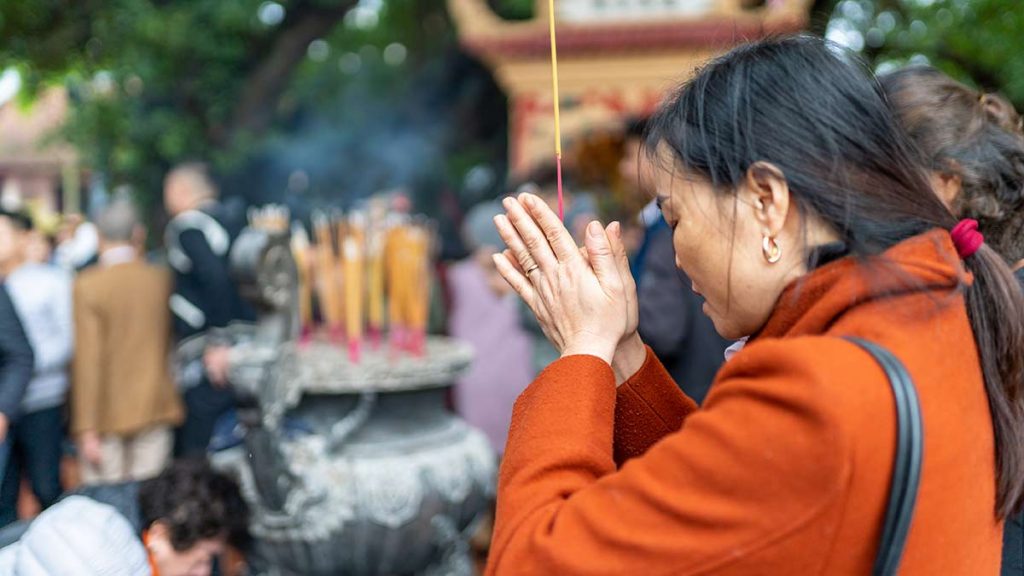
Nga Vu says Tet “means family reunion, wearing new clothes, cleaning and decorating the house, […] shrines, looking back at what I have done in the old year and plans and wishes for the New Year.” Setting intentions for a fresh New Year is a big part of Tet. “I hope to have more compassion, show tolerance for all living beings, be less selfish, more determined, braver, listen to others better, do more meaningful stuff and think about sex less,” a 25-year-old waitress in Hanoi told Chào.
“Nothing. I have some good memories from childhood. But now it is all just responsibilities to my mom and family. If I wasn’t in Vietnam anymore I guess I would miss it. But for now, it’s just something I have to do.”
While Tet is a undoubtedly a happy time, it can bring financial pressure and stress on certain families who perhaps do not have a lot to get by. Nguyen Thi Ba, a 68 year-old grandmother and retired farmer in Dong Ky village, remembers struggling to make ends meet. “In the past Tet was more like a pressure for me. We even did not have enough money just to eat, but no matter how the family’s economic status was back then, it was our duty to fully prepare the things which account for the traditional Tet: fat meat, onion, red sentences, a raisin tree, round firecrackers and chung cake,” she says. “If we could not afford them, we would have to make a loan in order to remain with the tradition.”
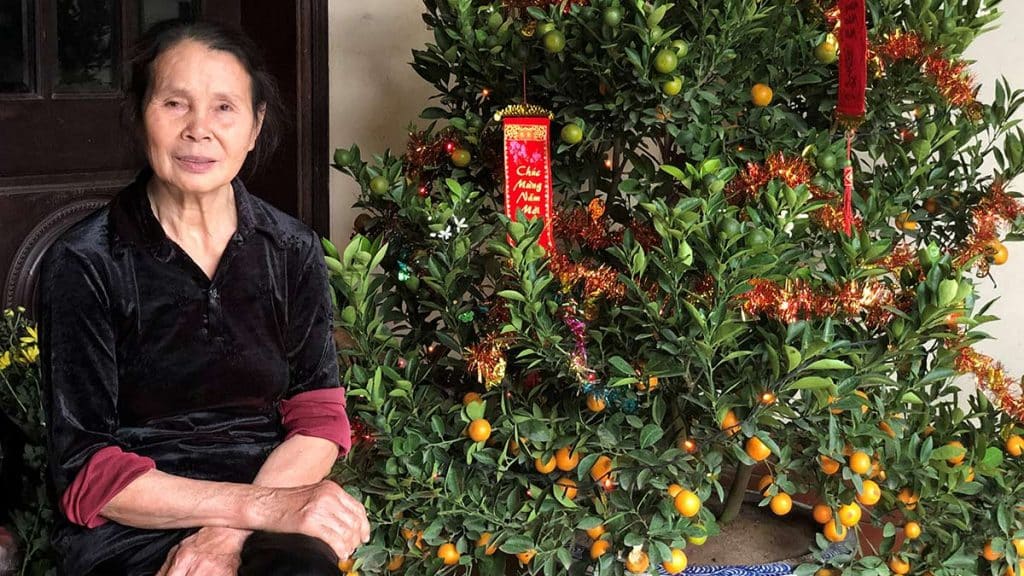
Lots of cleaning is done before the first day of the year, as sweeping during Tet is considered bad luck; you do not want to sweep away the good luck. Visiting pagodas and making wishes for the New Year are also important elements of the celebration. “Not only is it the sacred moment marking the transition between the old year and the new year,” says Nguyen Thi Ba “but Tet also contains both a conception of life as well as the deep and unique customs and beliefs that are imbued with national culture.”
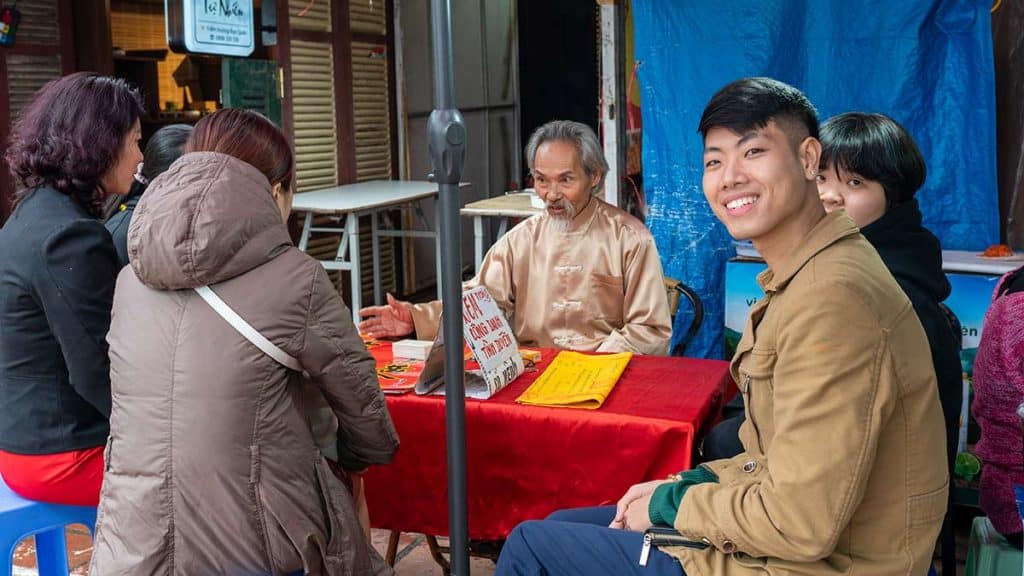
“Tet comes with kumquat trees and peach blossoms, so I often think about accompanying my dad to the garden in the suburb to pick up those trees.”
Family is the cornerstone of Tet. “Tet means a lot to me because it is the most important holiday in my country and it is when everyone is reunited in the family” says Phuong Anh, a 19-year-old student studying abroad.
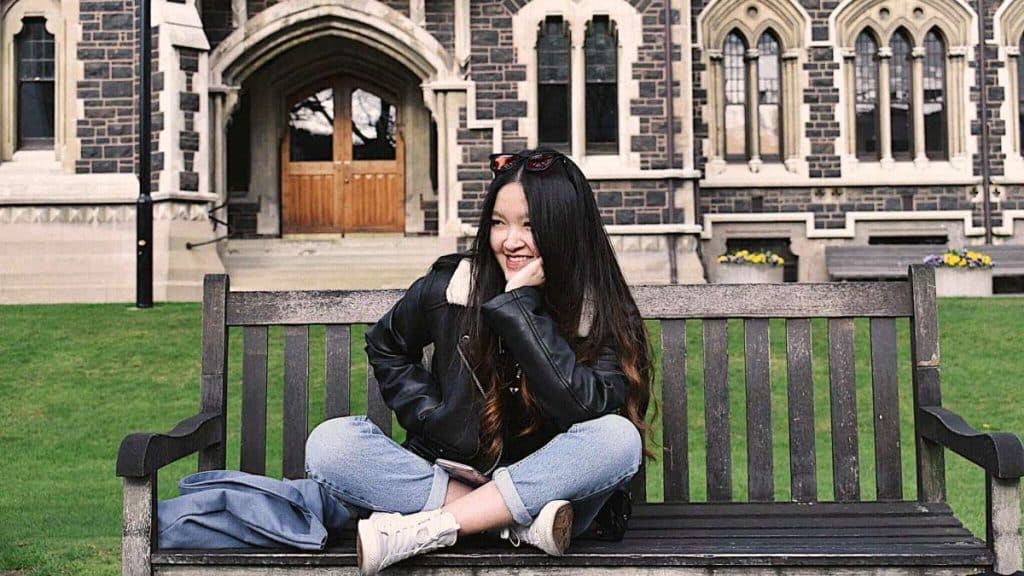
Family is a wonderful thing, but sometimes visiting them is just something carried out from a sense of duty, when you might honestly rather be in the Bahamas. On being asked the meaning of Tet, Nadia Ninguana, 32, an NGO worker from Central Vietnam, is blunt. “Nothing. I have some good memories from childhood. But now it is all just responsibilities to my mom and family. If I wasn’t in Vietnam anymore I guess I would miss it. But for now, it’s just something I have to do.”
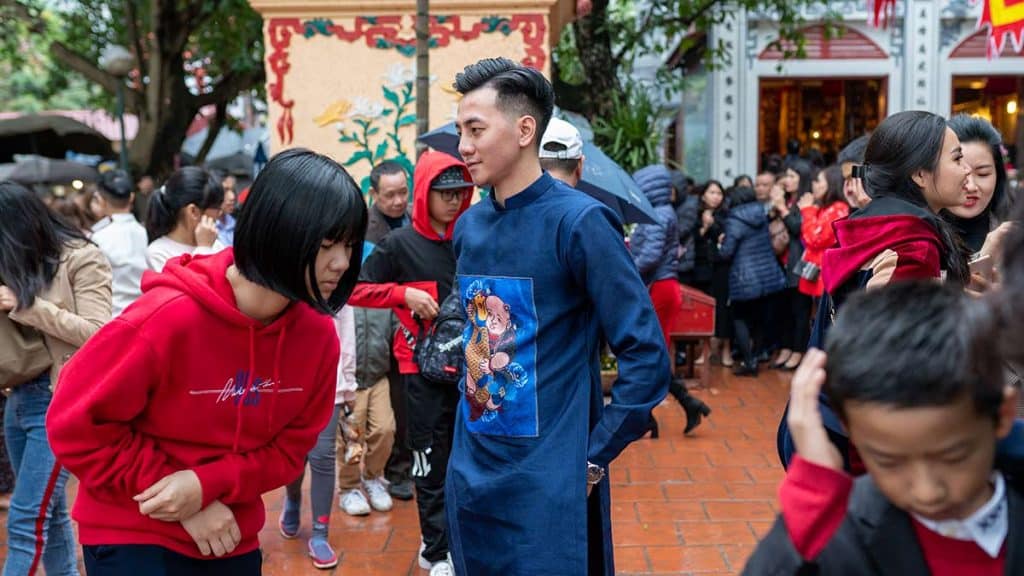
The first day of Tet is usually spent with the family and the following days with the extended family. “It is one of the most important festivals of the year” Dao Tuan says. “It is a time for me to stop all work so I can spend time with family […] I can relax, visit my parents, my relatives and my friends who I don’t meet very often.”
Jade Ngo, a 27-year-old student who has been living abroad since she was 14, has her doubts about family meddling during the holiday. “It comes with all your standard family drama and people asking when I’m going to get married, but it is good overall, especially for someone like me who spends most of my time away from home.”

The family you spend time with is not always the same as when you were a child. “When I was a child I enjoyed Tet with my parents and brother, but now I’m married so I must spend Tet at my husband’s house with my parents-in-law,” Dao Tuan says. “However, the atmosphere of Tet has not changed since I was a child.”
Phuong Anh who recently moved to New Zealand and spent her first Tet away from home last year says, “I know Vietnamese people living in New Zealand, so we made rice cake and other food that people usually make during Tet. It wasn’t big celebration, but I was happy to not be alone during the holiday.”
“My favorite thing was to climb on the big green tree far away to see the majestic scene when the firecrackers were lit and exploded in the sky. It was really exciting to hear that shrill and ear-splitting sound. It tore down the sky and reminded me of the war-victory that we had in the past.”
The weeks leading up to Tet are busy – traffic jams full of motorbikes with kumquat or peach blossom trees strapped on and bags of groceries hanging off the handles. Shops often prepare a great deal in advance to ensure they have enough stock to satisfy customers.

“All my favorite memories involve buying stuff, but not in Christmas’ capitalistic way, Ngo says. “Tet comes with kumquat trees and peach blossoms, so I often think about accompanying my dad to the garden in the suburb to pick up those trees.”
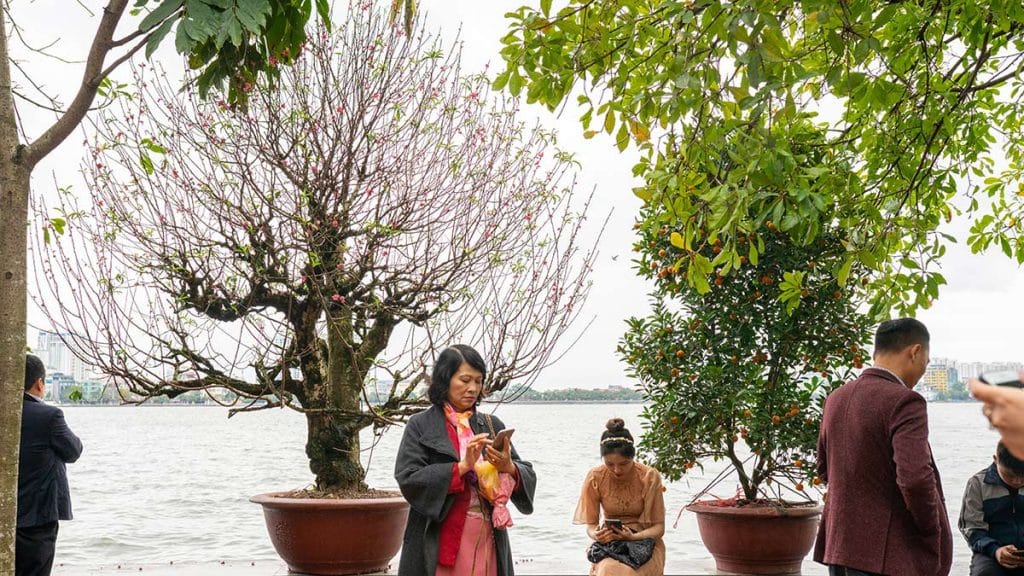
And it is true, while Tet can be costly it is not really about the money, but a series of feelings and sensations it evokes. It can be very nostalgic: “Every Year we had the huge firecrackers festival on the fourth day of the year. This was back in the time when the firecrackers were real and were taken from an official’s house to the village communal house,” Grandma Ba says. “My favorite thing was to climb on the big green tree far away to see the majestic scene when the firecrackers were lit and exploded in the sky. It was really exciting to hear that shrill and ear-splitting sound. It tore down the sky and reminded me of the war-victory that we had in the past.”
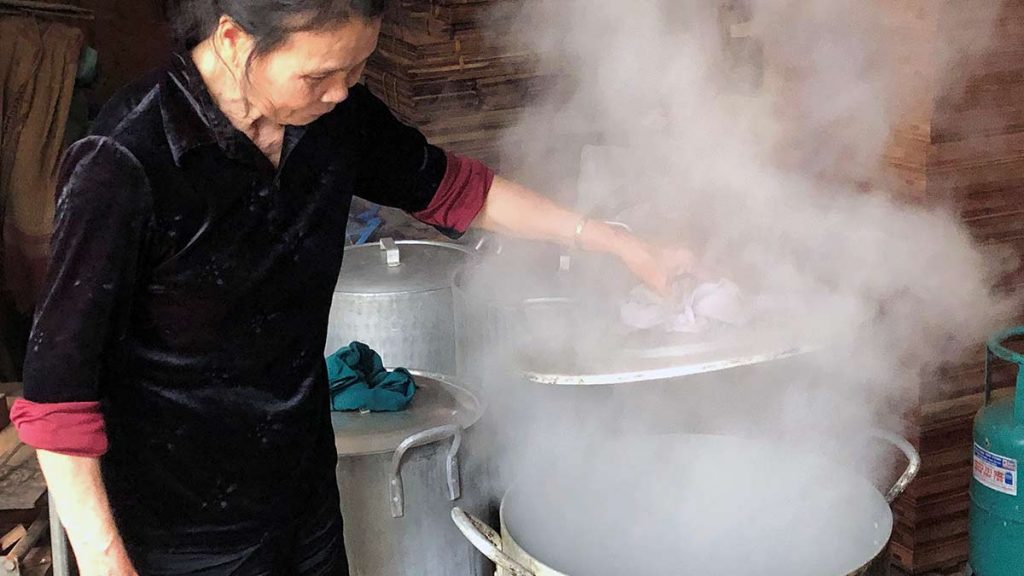
There are not many gifts at Tet other than the infamous red envelopes, or lucky money, given to children and the elderly. “When I was small, Tet was so much more fun. I was off school, my mom bought me new clothes, I ate good food and, of course, I got red envelops (li xi) from adults!” Nga Vu says.
Ngo sometimes feels homesick during Tet, “It’s hard to miss out on li xi,” she says, laughing.
The Tet holiday lets people put another year behind and start fresh with the New Year. It is a time of food, laughter and, of course, those little red envelopes. “Tet means family. Everyone gets time off during Tet, so we get to spend more time together,” Ngo says.
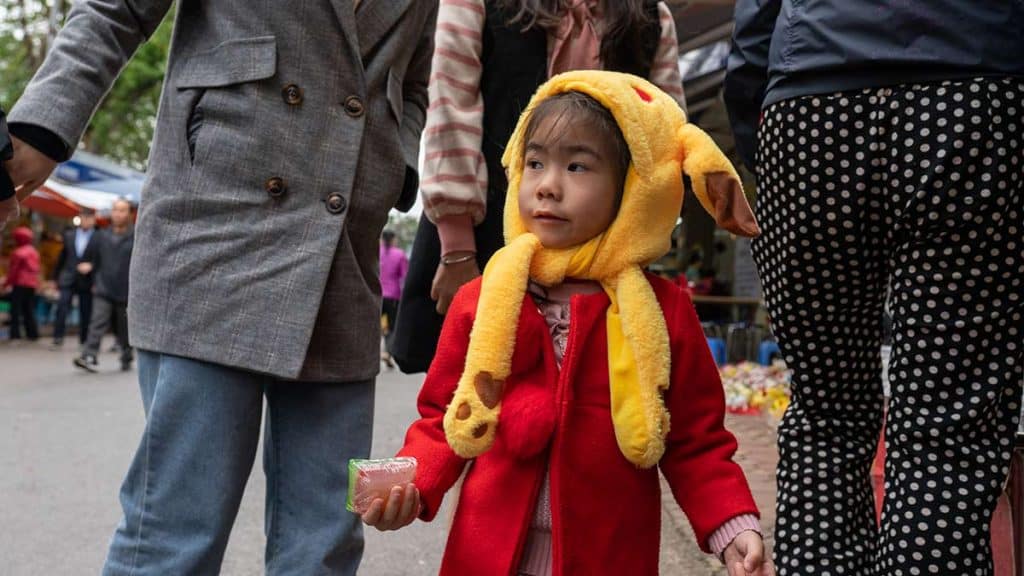
It is the time of year people get together with all of their family, both living and dead, and bring in a New Year full of prosperity, health and happiness. As Grandma Ba says, “I only have one piece of advice for young people today: no matter how big you or your business grows and how grandiose your career is, you still need to return to the source of your family, where you were born and raised.” That is the true essence of Tet: returning to where you came from, being grateful for what you have and bringing in the New Year surrounded by your loved ones.
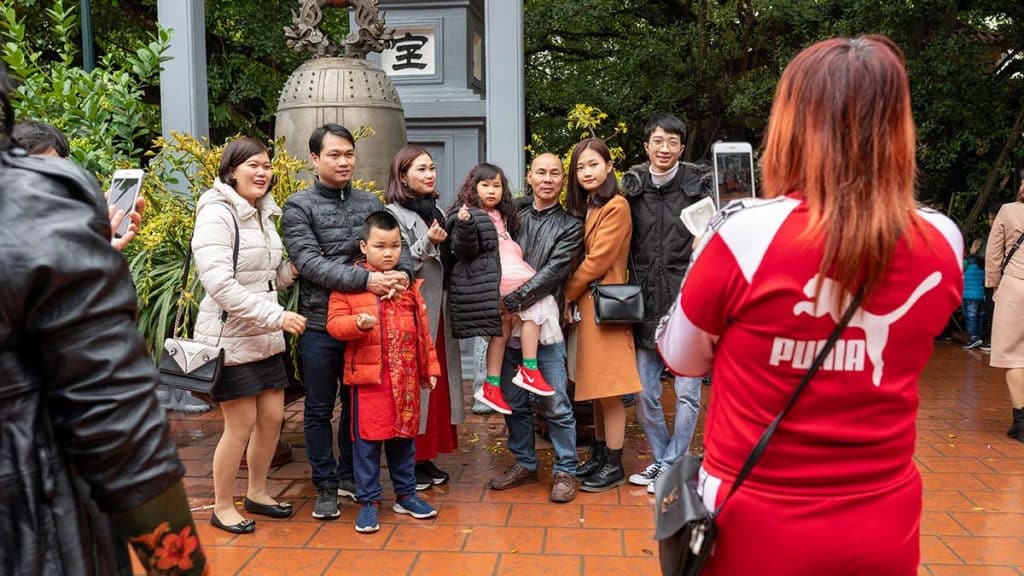
Additional reporting by Anna Chu.
You may like
-
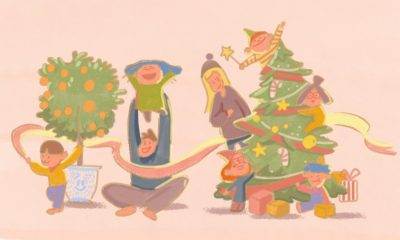

[Column] The love is the thing
-
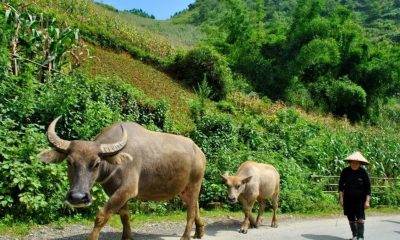

Where the buffalo roam: 5 things you might not know about the bovine beasts
-
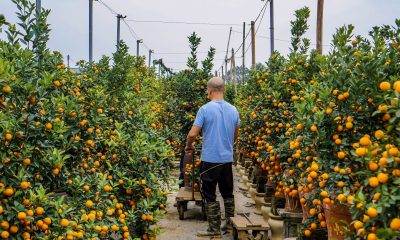

[Photo series] The flora of Tet: from kumquat trees to peach blossom
-


A taste of Hanoi’s Tet dinner table
-


[Op-ed] Why you should cancel your Tet holiday and stay home
-
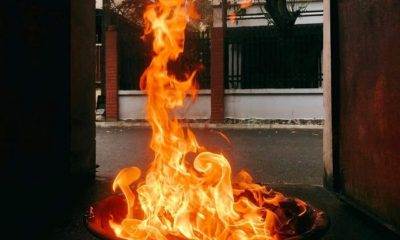

Hanoi lights a fire
-
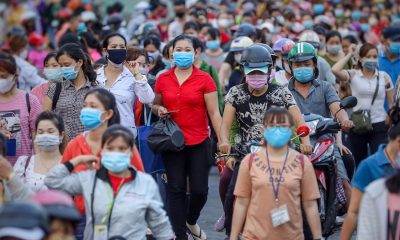

Vietnam trade union federation calls for workers to restrict Tet travel